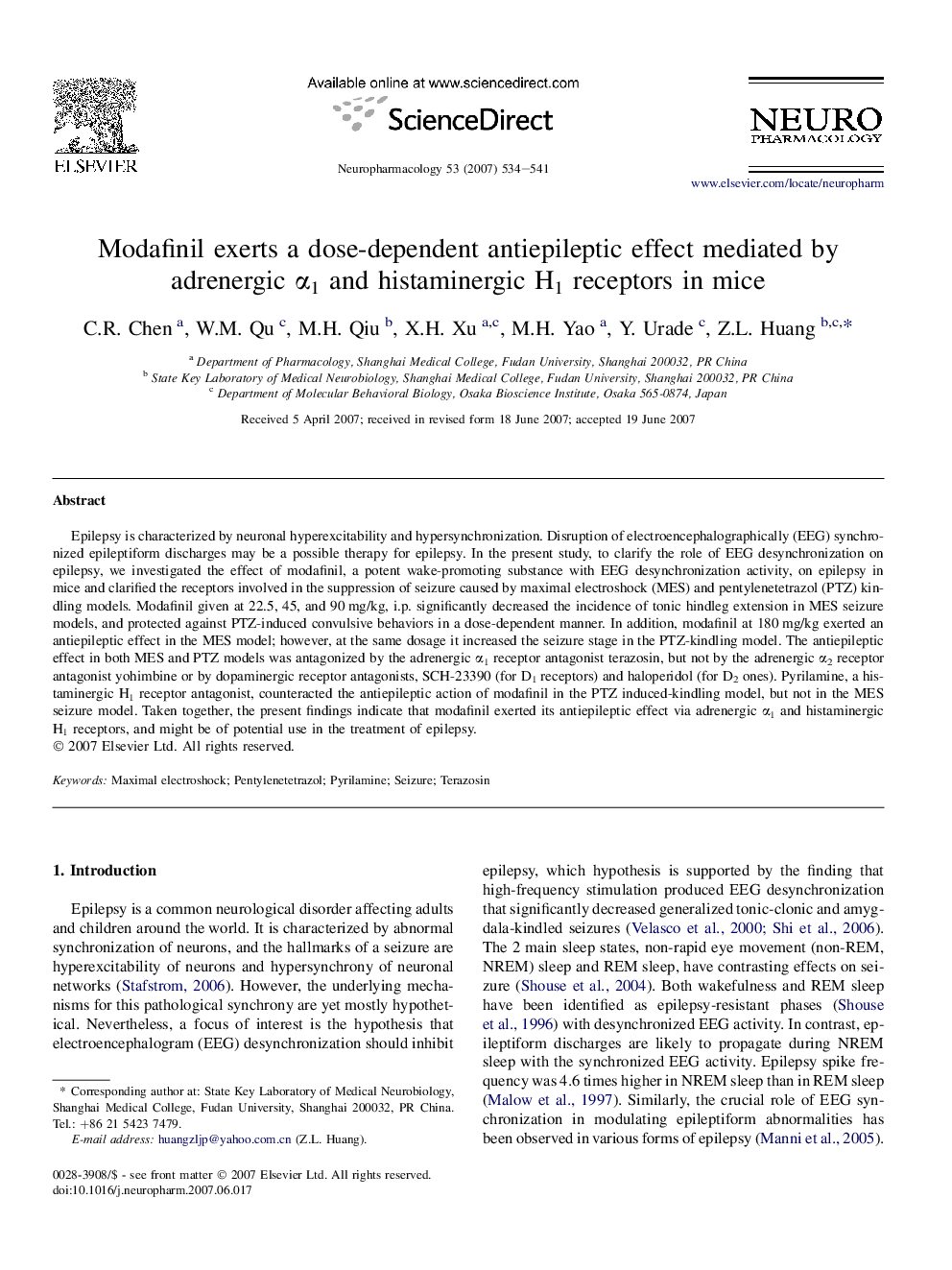| Article ID | Journal | Published Year | Pages | File Type |
|---|---|---|---|---|
| 2495144 | Neuropharmacology | 2007 | 8 Pages |
Epilepsy is characterized by neuronal hyperexcitability and hypersynchronization. Disruption of electroencephalographically (EEG) synchronized epileptiform discharges may be a possible therapy for epilepsy. In the present study, to clarify the role of EEG desynchronization on epilepsy, we investigated the effect of modafinil, a potent wake-promoting substance with EEG desynchronization activity, on epilepsy in mice and clarified the receptors involved in the suppression of seizure caused by maximal electroshock (MES) and pentylenetetrazol (PTZ) kindling models. Modafinil given at 22.5, 45, and 90 mg/kg, i.p. significantly decreased the incidence of tonic hindleg extension in MES seizure models, and protected against PTZ-induced convulsive behaviors in a dose-dependent manner. In addition, modafinil at 180 mg/kg exerted an antiepileptic effect in the MES model; however, at the same dosage it increased the seizure stage in the PTZ-kindling model. The antiepileptic effect in both MES and PTZ models was antagonized by the adrenergic α1 receptor antagonist terazosin, but not by the adrenergic α2 receptor antagonist yohimbine or by dopaminergic receptor antagonists, SCH-23390 (for D1 receptors) and haloperidol (for D2 ones). Pyrilamine, a histaminergic H1 receptor antagonist, counteracted the antiepileptic action of modafinil in the PTZ induced-kindling model, but not in the MES seizure model. Taken together, the present findings indicate that modafinil exerted its antiepileptic effect via adrenergic α1 and histaminergic H1 receptors, and might be of potential use in the treatment of epilepsy.
